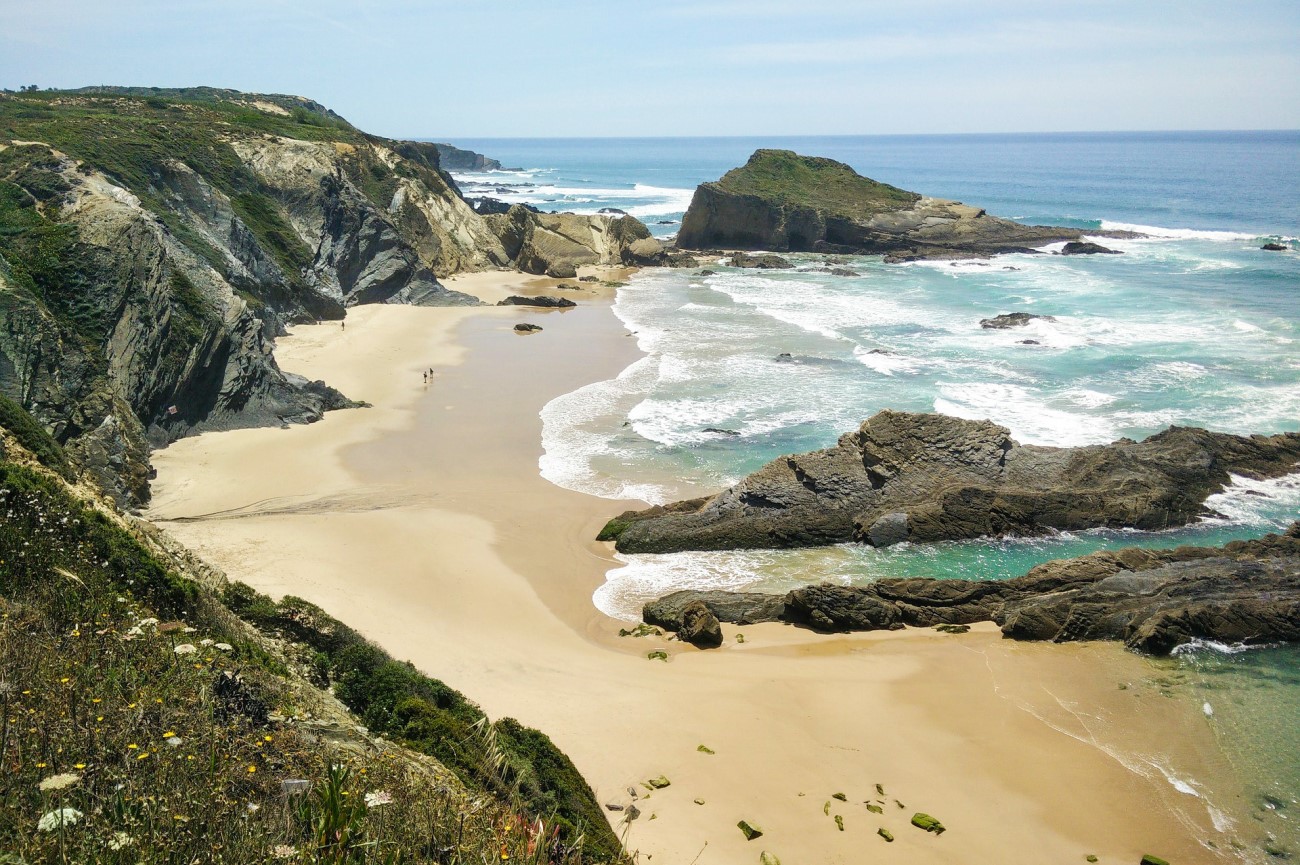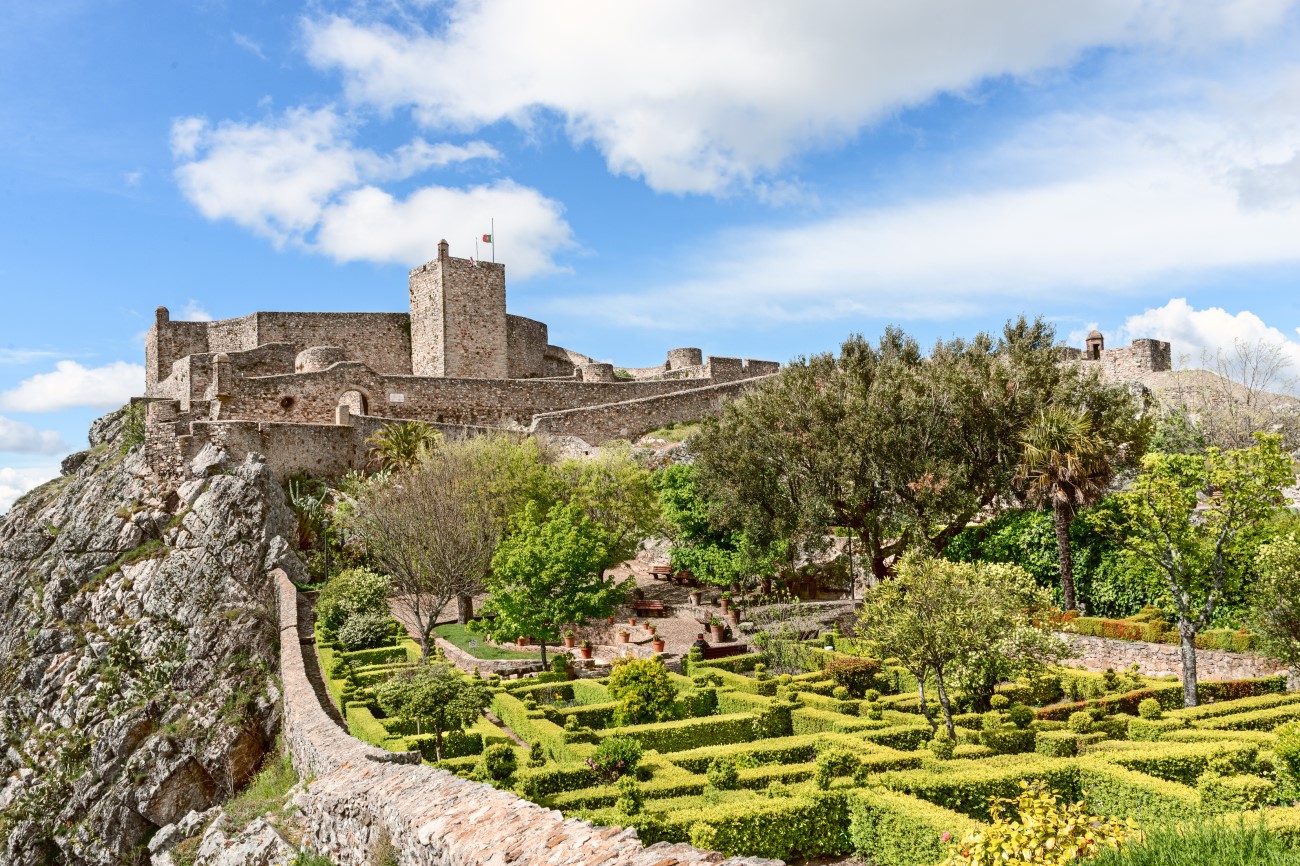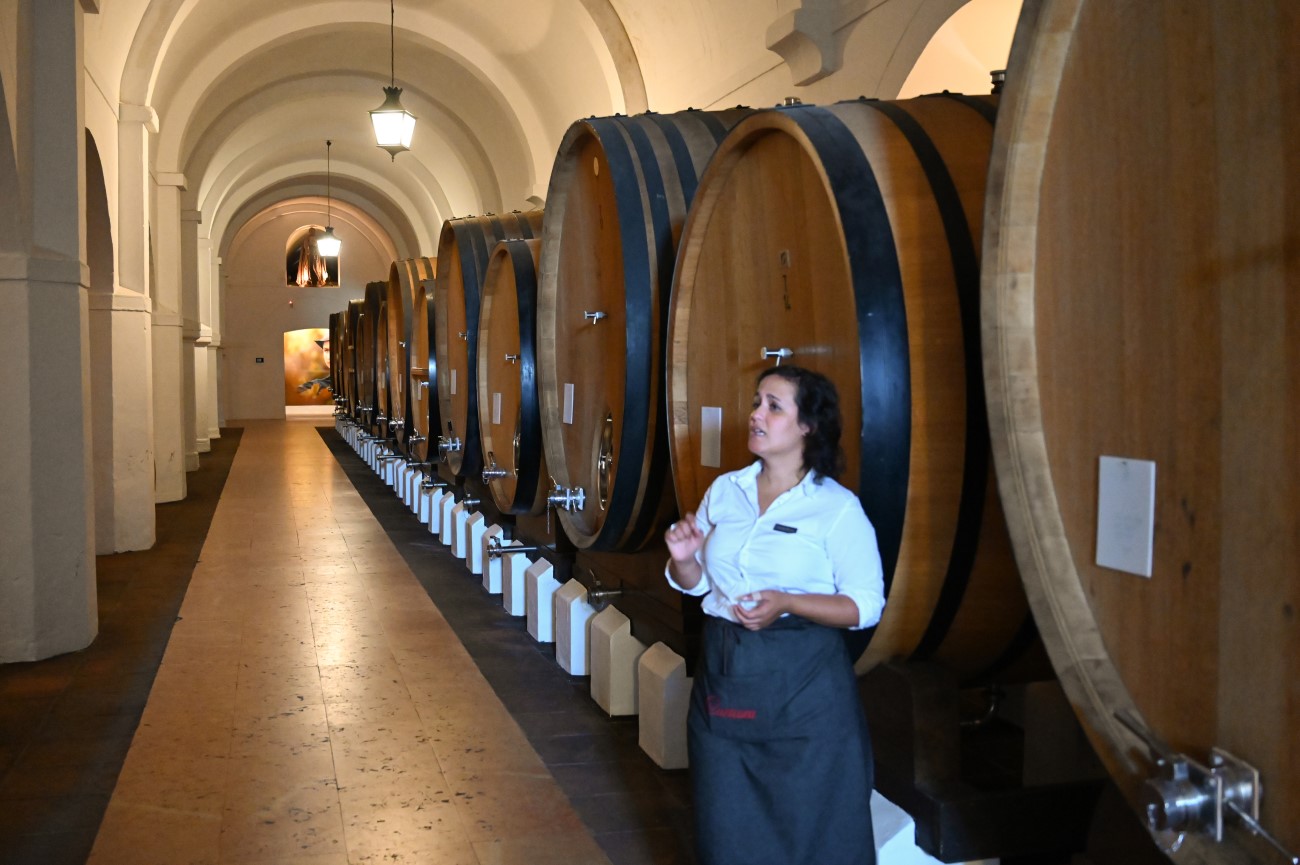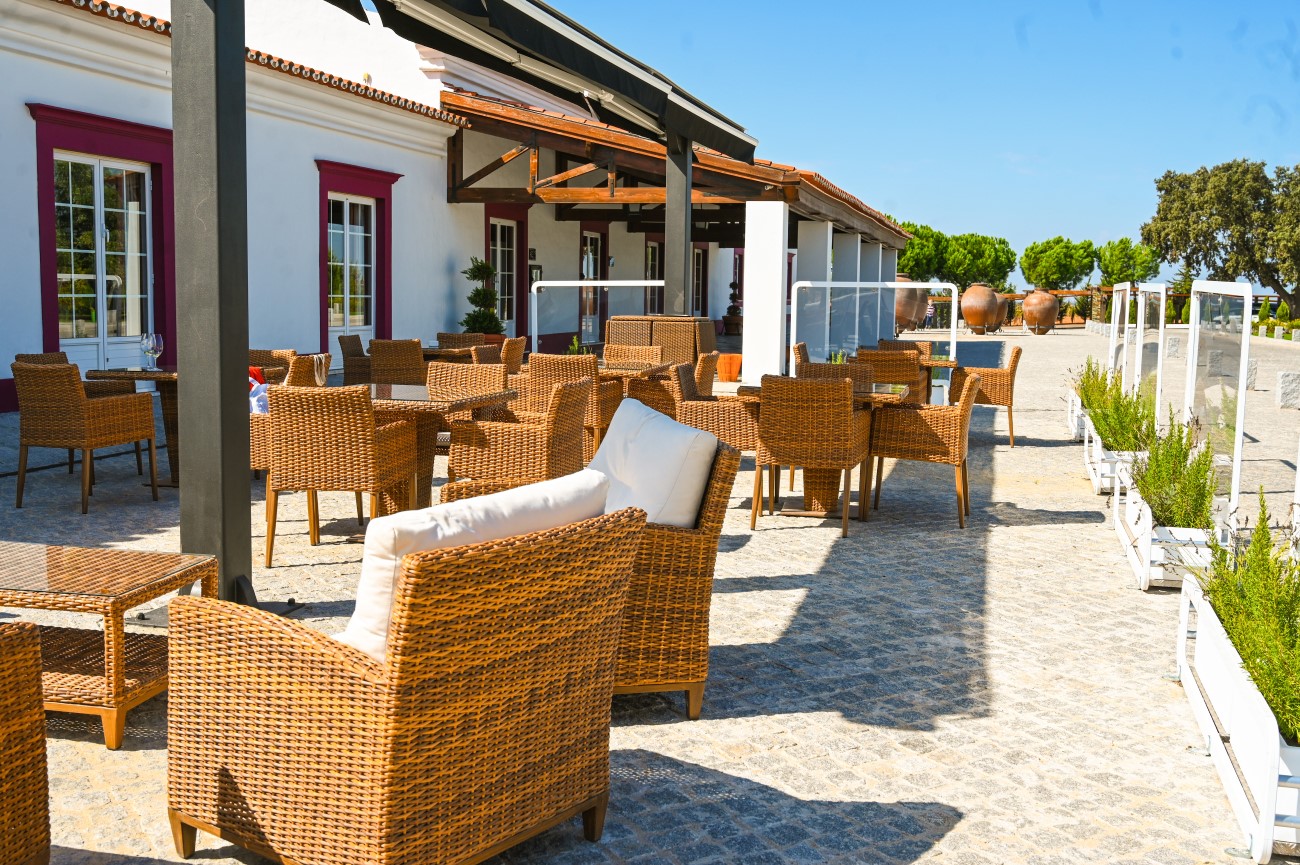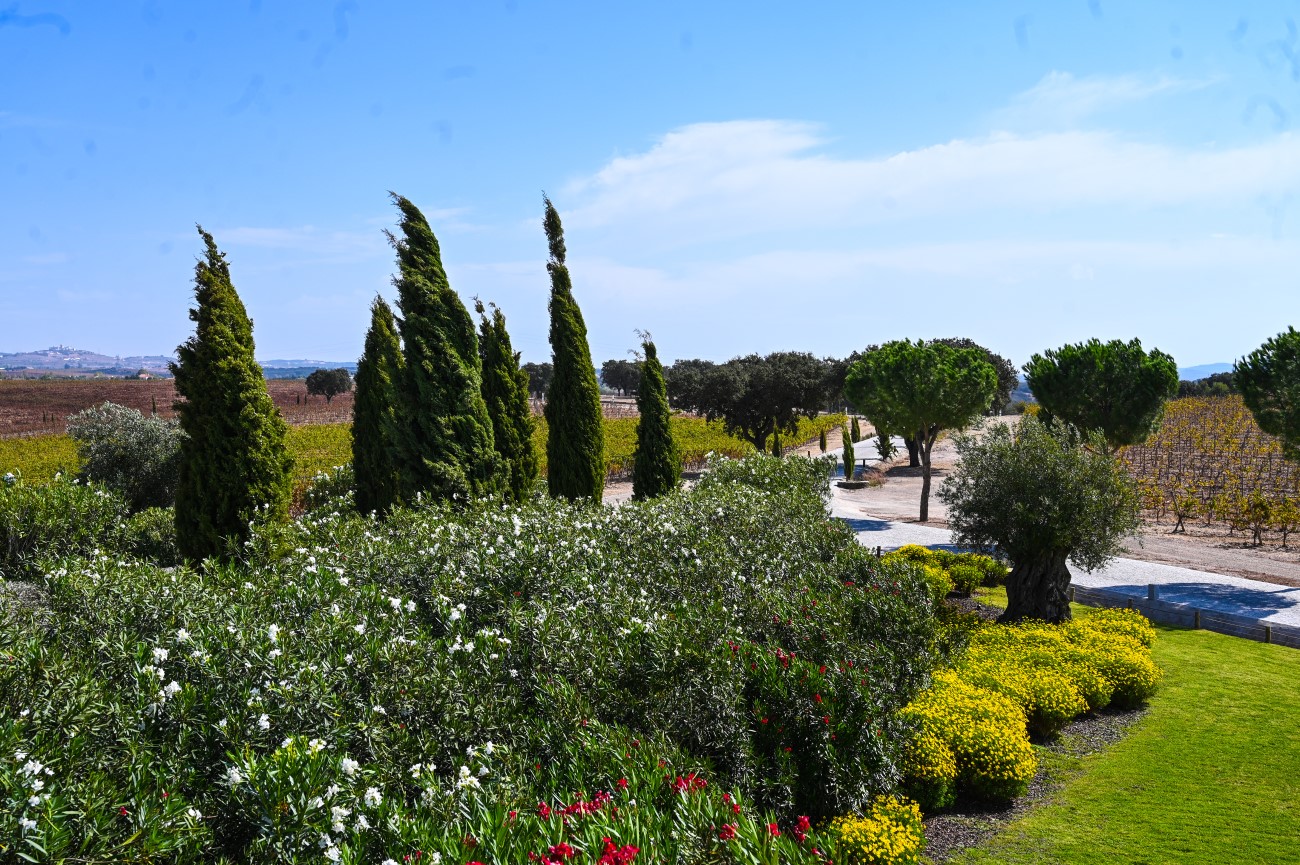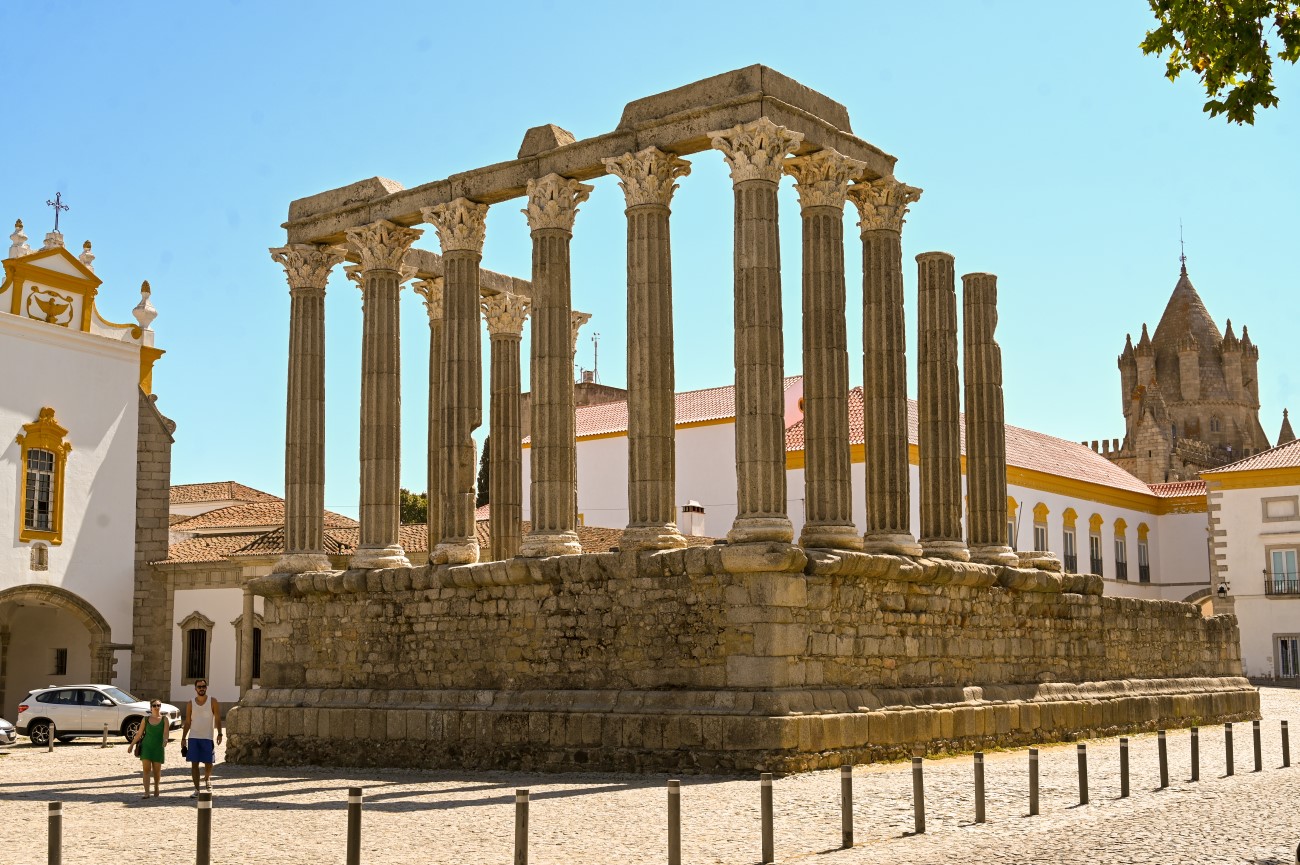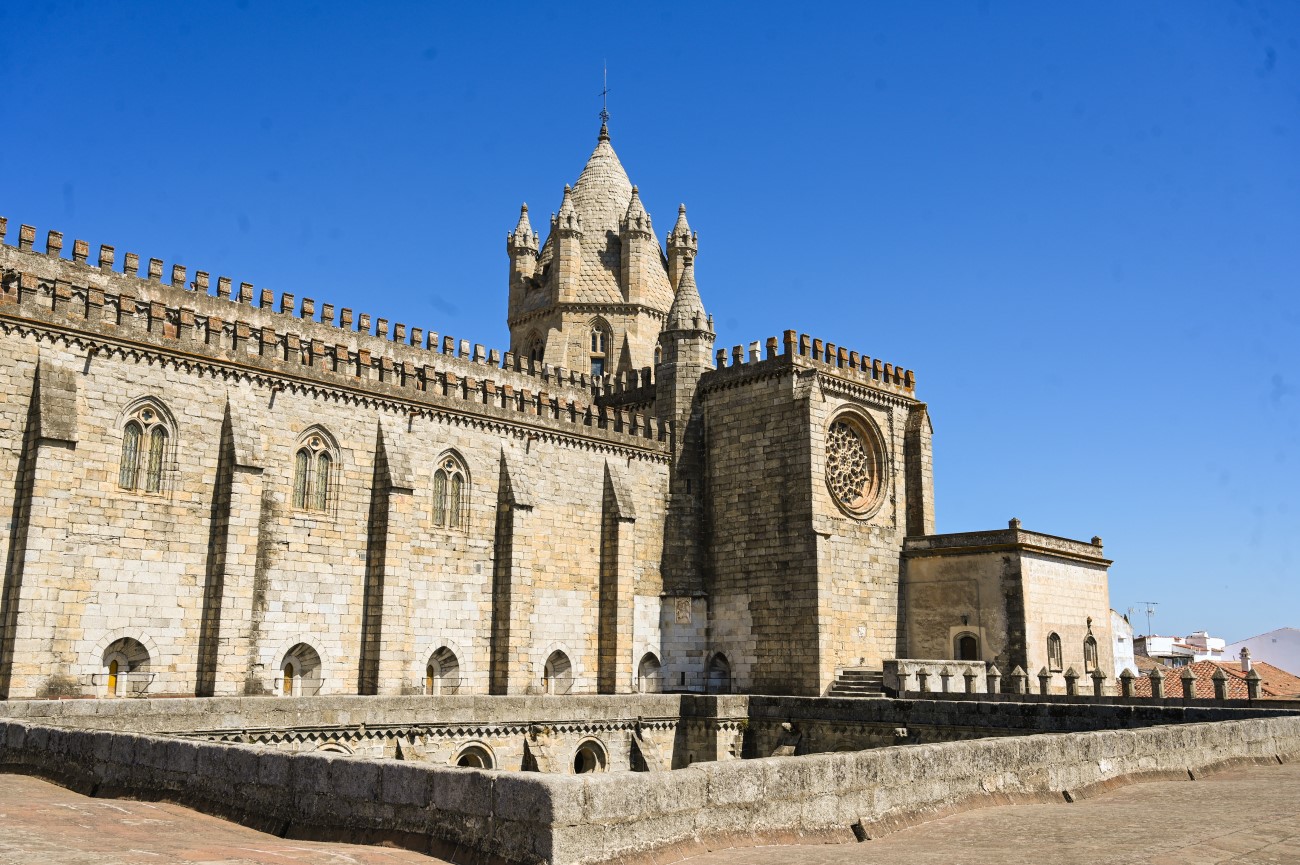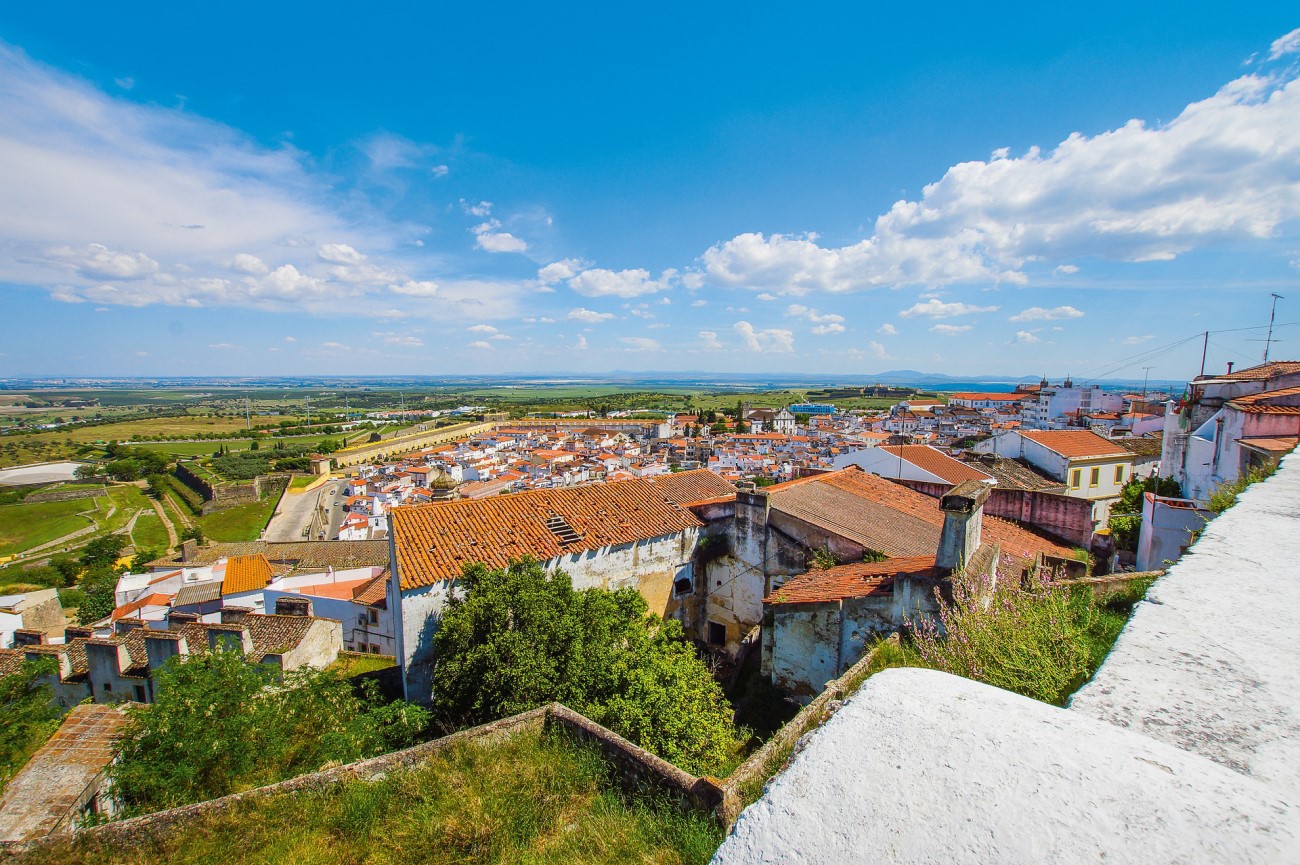5 Reasons to Visit Alentejo
The Alentejo region in Portugal is famous for its cork oaks and olive groves, but there is so much to do in this area that spans from the Tagus River down to the Algarve and East all the way to the Spanish border.
Alentejo is one of the top wine regions in Portugal, where landscapes are stunning, the gastronomy is fresh and delicious, and the people are warm and welcoming.
Located about two hours from Lisbon, the Alentejo region features an incredible Atlantic coastline, vineyards, wheat farms, and the primary route between Portugal and Spain.
The Alentejo has been labelled the Tuscany of Portugal, and once you arrive in the region, you will be enamoured by the white-painted buildings, the craggy coastline, golden beaches, and the slow, easy, pace of life.
Despite covering almost 30% of the country, Alentejo is sparsely populated which means that weary travellers can find respite from the crowds.
Home to two UNESCO World Heritage sites, world-famous olive oil, Alentejo wine, and beaches, you’ll never spend a dull moment in this region!
Check out our favourite reasons to visit Alentejo:
1. The Beaches
Portugal has some of the most beautiful beaches in the world, and you will find many of them in Alentejo.
Alentejo is still relatively quiet on the tourism front and so you are likely to have no trouble finding an uncrowded beach! This means you can stake your space, relax, and enjoy the sun!
Whatever your beachgoing-pleasure, you will find a place in Alentejo. From sunbathing to picnicking, water sports to taking a swim, these beaches here are first-rate.
By day, you can take in the white sand and the blue Atlantic ocean, by night, you can feast on fresh seafood dinners in the many quaint restaurants in the surrounding towns.
More than just good for swimming, the Alentejo beaches are good for surfing and kayaking as well.
There is great hiking along the coastline; the height of the cliffs provides amazing views. Additionally, there are trails in the sand for strolling, and if you are interested in taking in nature in the Alentejo region, you can easily find a natural park to visit.
Some of the beaches, like Porto Covo, Praia do Carvalhal, Praia de Odeceixe, and Vila Nova de Milfontes, are surfing destinations. Others, like Praia da Costa de Santo André, are surrounded by a lagoon, and a nature reserve with nesting birds.
Pack some sunscreen and a lunch and you can make a full day of it!
If you want to plan a full beach holiday, you can find accommodations in a pousada or inn, or rent a home or room in one of the beautiful nearby towns and villages.
2. The Castle of Marvao
Located in northern Alentejo, in the municipality bearing the castle’s name. The castle is very well preserved, despite being constructed centuries ago.
The castle was built strategically in order to keep an eye on the border with Spain, which sits only ten miles away. The original castle was built in the 9th century by an Islamic Knight but has been modified, fortified and reconstructed many times between the 13th and 19th centuries.
Once you enter the castle of Marvao, you can wander around the grounds, which feature landscaped gardens, and browse through the many craft shops or get something to eat in the cafe.
From inside the castle, make sure you take in the views of the town below, the Serra de Sao Mamede Nature Park, and the Spanish City of Valencia de Alcantara.
The views from the top are incredible, and the entrance price is minimal, just a couple of Euros for admission.
3. Wineries
When you visit Alentejo, you should be sure to visit a winery or two.
The wineries in Alentejo are world-renowned and it is not only one of the best wine regions in Portugal, but it was also once declared the number one wine region in the world.
Alentejo is known for the stunning views surrounding the wineries. While you are enjoying the winery portion of your trip itinerary, you will be able to partake in many activities, including bicycle tours, vineyard tours, and blind wine tasting.
From fabulous food to bicycle tours, or perhaps a blind wine tasting is something that interests you. You can be tempted by the wines at Adega da Cartuxa winery, which is located in the capital of Alentejo, called Évora.
Adega da Cartuxa winery is found in the capital of Alentejo, known as Evora. The winery is situated next to a beautiful 16th-century monastery called Convento da Cartuxa.
There is a wine estate and hotel at Herdade da Malhadinha where you can partake in wine tasting, make use of the spa, and even take horse-back riding lessons.
Adega de Mayor is another winery located in a beautifully architectural building that features wine-tasting, tours of the winery, and workshops, set in stunning surroundings.
João Portugal Ramos winery is set in a modern backdrop, and, besides the usual wine tastings, you can have an experience exploring the vineyards and the cellars. You may also create your own wine or enjoy tapas with your wine, or partake in a meal with one of the winery’s winemakers.
Another winery that may be of interest to you is the Herdade das Servas, which is run by brothers that belong to one of the oldest wine-making families in Alentejo. Among the experiences available at the winery are blind taste-testing, and exploring the wine cellars. While you are exploring the grounds, take note of the 17th-century clay pots on display, decorations with a nod to the traditional way of making wine.
Visit one, (or all!) of these wineries to get a real sample of what the region has to offer.
4. Ruins, Villages, and Archaeological Sites
Alentejo is home to many interesting cultural hotspots. Depending on the area you choose, you may find ancient Roman ruins, a medieval town, marble quarries, a walled town, or other curious places to visit.
The Aqueduto da Agua da Prata is an arched aqueduct dating to the 16th century and can be found, in part, in Evora.
The aqueduct was designed by architect Fransisco De Arruda and provided the city with water. The aqueduct is arched, and there is the 8 kilometer Agua da Prata footpath that can be hiked. In the city, there are shops and houses that have become a part of the infrastructure.
The fortified village of Castelo de Vide is a beautiful place to walk through the walled streets. The white buildings juxtaposed against the gorgeous flowers make for a wonderful, visual experience.
Evora is also home to a Roman Temple that dates back to around the 1st Century and is the most popular tourist attraction in the area. It is located in the Largo Conde de Vila Flor square, and there is no entrance fee.
This heritage site is known as the Temple of Diana, and is preserved remarkably well.
When you visit Alentejo, you can tour around the Temple in just a few minutes, and admire the manicured garden closeby when you are finished. If you are interested in seeing a well-preserved piece of history, the Roman Temple of Evora is definitely worth the visit.
The Cripta Arqueologica do Castelo is an underground fortress that is located beneath a castle that now acts as a pousada- a Portuguese inn. Artifacts have been found in the location that have been dated to the Iron Age. This location is a perfect stop if you like ancient artifacts and archaeological dig sites.
5. Évora and Elvas
If you are looking to add larger cities to your places to visit, you can explore Evora and Elvas.
Evora
Evora has been deemed a UNESCO World Heritage site, and is filled with white-washed houses, adorned with traditional Portuguese azulejos, and modernization has not changed the overall look of the city.
Upon arriving in Evora, you will find convents, palaces, and other historical sites. In the past, the area has been inhabited by the Celts, the Moors, Romans, and Portuguese royalty.
Many battles have been fought in the area, and subsequently, history thrives within the town’s borders.
With a population of just over fifty thousand people, you can be sure that you will experience only minimal crowds at restaurants, cafes, bars, and cultural sites.
Culture thrives in Evora. You will be able to visit popular sites like the Fountain of Portas de Moura, built in 1556, the Royal Palace of Evora, and its impressive architecture, the Roman Temple of Evora and the Prata Aqueduct. Explore the sites, taking the time to savor every minute.
The Cathedral of Evora is the largest cathedral in Portugal, and contains a pipe organ from the Renaissance. Inside you will find statues of the apostles, a chapel designed in the Manueline style, while the main chapel is Baroque in style.
If you are interested in religious history, the Capela dos Ossos (or chapel of bones) is a chapel located in the Church of St. Francis and was built by a Franciscan monk. Marvel at the walls created from over five thousand skulls.
An earthquake destroyed much of Lisbon in 1755, but Evora was left intact and stands as a testament to Portugal’s golden age.
Elvas
Elvas is smaller than Evora, at just over twenty-thousand inhabitants.
However, culture runs big here. In fact, it is named as a World Heritage Site because of the incredible star fort that creates a fortification around the city. The city lies close to Spain, and the constant threat from that country once made these walls a necessity.
The fortification is a sight to behold and can be explored by walking along the cobblestones streets.
The city of Elvas is relatively close to the Guadiana River, and the Amoreira Aqueduct brings water to the city from this river. As the Prata Aqueduct in Evora, the arches provide impressive scenery.
A Peaceful Getaway
If you are looking for a vacation spot away from the crowds of the big cities, the Alentejo region is a perfect destination.
You will find all of the cultural sites, wineries, and beaches of the more popular destinations in Portugal while being enamored by the landscape of the region.
Enjoy traditional Portuguese food and wine, relax on the many beaches, take in a historic site or two, or go on a hiking adventure- all in the Alentejo region.
All of the things you are looking for in a vacation, you will find in Alentejo. If you are interested in exploring the area for yourself, give us a call and we will help you build the perfect holiday!



